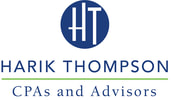|
The ACA requires that employers with 50 or more full-time-equivalent employees provide minimum essential coverage that is affordable — or face a penalty for not complying. The affordability requirement is satisfied if an employee's premium for self-only coverage does not exceed a specific percentage of their household income or a certain safe harbor amount. Percentage increase for 2019 Each year, the affordability percentage for health coverage is adjusted for inflation. For 2018, the rate is 9.56 percent of the employee's household income, down from 9.69 percent in 2017. On May 21, 2018, the IRS released Revenue Procedure 2018-34, which states that for plan years starting in 2019, the affordability percentage will increase to 9.86 percent — the highest amount since the ACA's passage. This means that employees' premiums for the lowest-cost self-only coverage cannot be more than 9.86 percent of their household income. Three safe harbor options As noted, the affordability percentage threshold applies to employees' household income. But since it's difficult for employers to know their employees' household income, the ACA provides three safe harbor alternatives, which can be used instead of household income. You do not have to meet all three requirements; just one will do. 1. The employee's W-2 wages, as shown in Box 1 of the form. For plan years starting in 2019, coverage is affordable if the employee's premium does not exceed 9.86 percent of the amount in Box 1 of the W-2. Although this method is relatively simple to apply, keep in mind that it uses current-year wages. Therefore, you won't know whether the affordability requirement for an employee has been met until the end of the year. 2. The employee's rate of pay. Coverage is affordable if the employee's premium does not exceed 9.86 percent of their monthly salary or wages. To determine the monthly rate of pay for an hourly worker, multiply the hourly pay rate by 130 hours. For instance, an employee makes $15 per hour at the start of 2019. Multiply $15 by 130, which equals $1,950. Then multiply $1,950 by 9.86 percent, which comes to $192.27. Coverage is affordable as long as the employee's premium does not exceed $192.27. For salaried employees, affordability is based on monthly salary. The rate-of-pay method cannot be used for employees who are paid solely by commission, nor can it be used for tip wages. 3. The federal poverty level. The employee's premium for the lowest-cost self-only coverage cannot be more than 9.86 percent of the most recently published FPL for a single person. Applicable large employers should take the affordability standard into account when designing their 2019 health care plans — since pricing below the threshold could trigger penalties, as mandated by Section 4980H(b) of the ACA. Comments are closed.
|
Newsletter articles are posted every 2 weeks. If you would like to have our e-newsletter delivered directly to your inbox, please sign up. Your information is confidential; you can unsubscribe at any time. Subscribe. Categories
All
|
Proudly powered by Weebly

 RSS Feed
RSS Feed